Dry Ice Floating Bubbles
Exploration into the fascinating world of dry ice is never boring, and the same goes when you add in some bubbles! Bubbles will float on […]
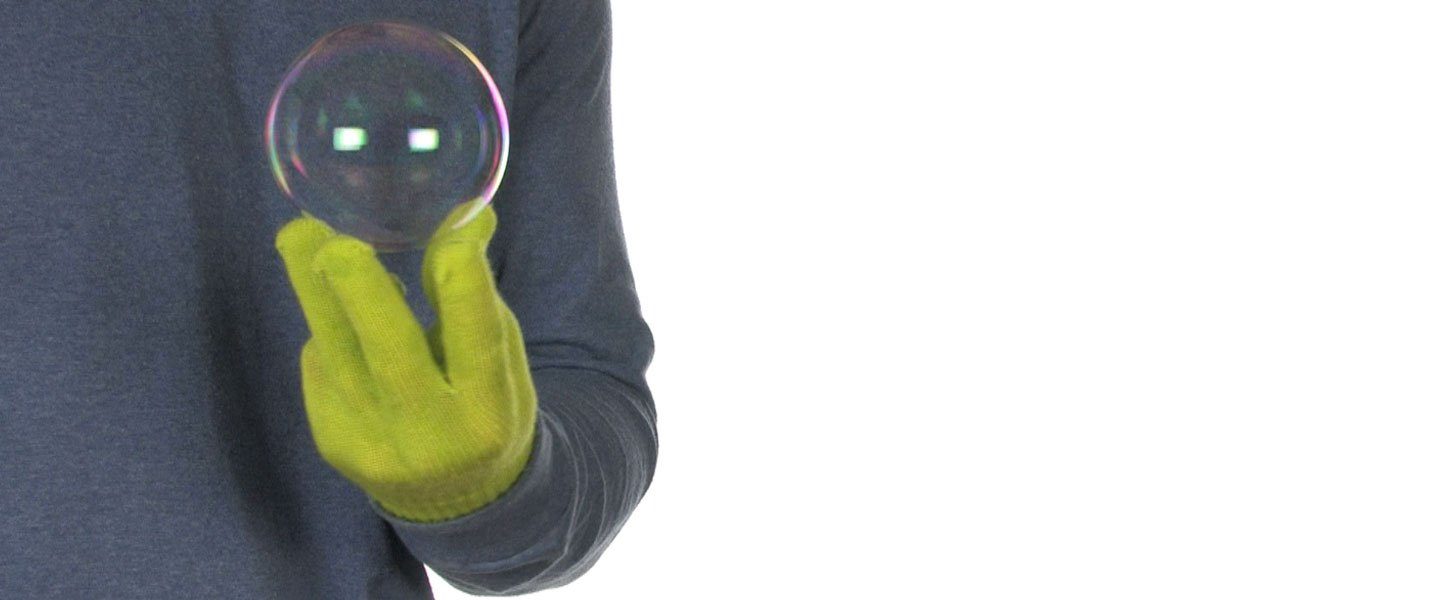
With the Bouncing Bubble, that little puff of air trapped in a thin soap film will bounce. What?!?! It’s true! These bubbles are formulated to be stronger than normal, but would still burst if they touched your skin or the ground. The secret is in the glove that keep the floating soap sphere from bursting when it touches your hand.
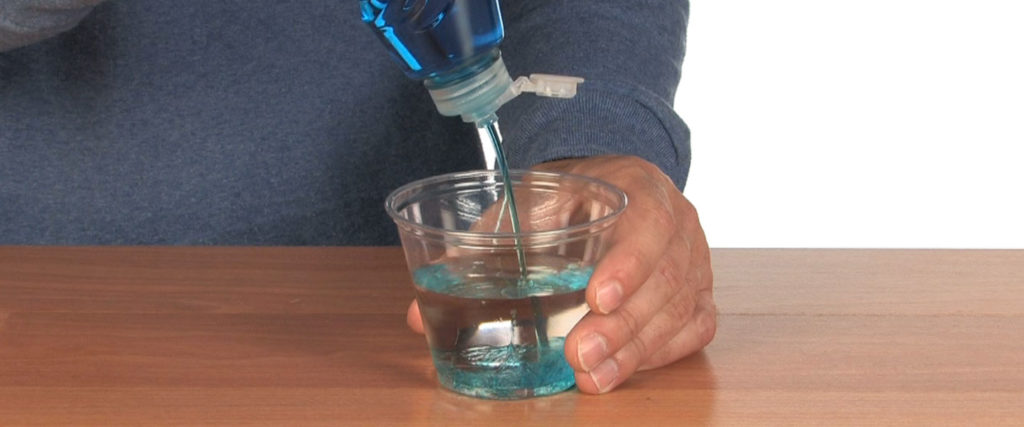
Pour 3 parts water and 1 part dish soap into a small cup.
Prepare a second solution using 3 parts water, 1 part dish soap and 1 part glycerin.
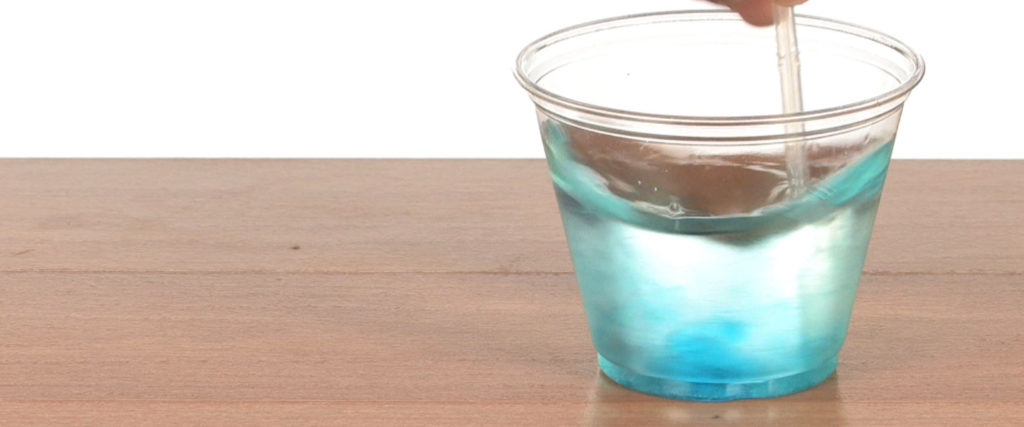
Stir to combine. We suggest letting your bubble solutions rest for 24 hours for best results.
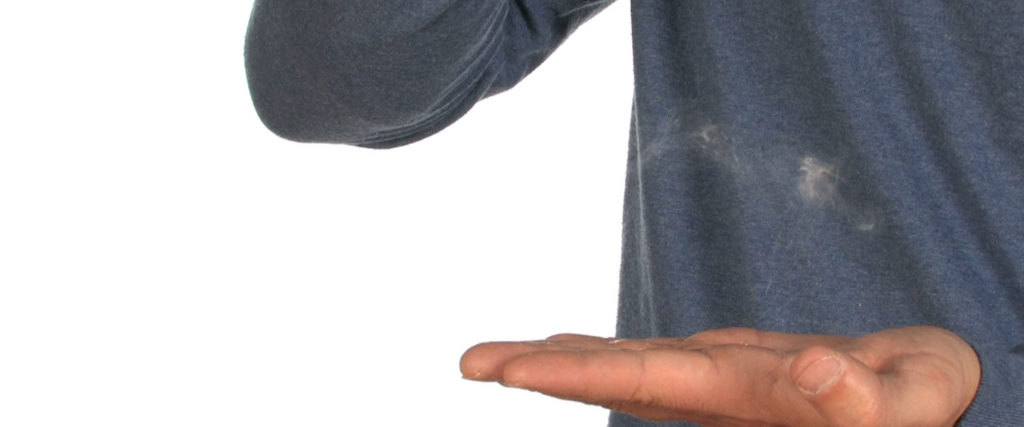
Test your solutions with your bubble wand. Try holding a bubble in your hand.
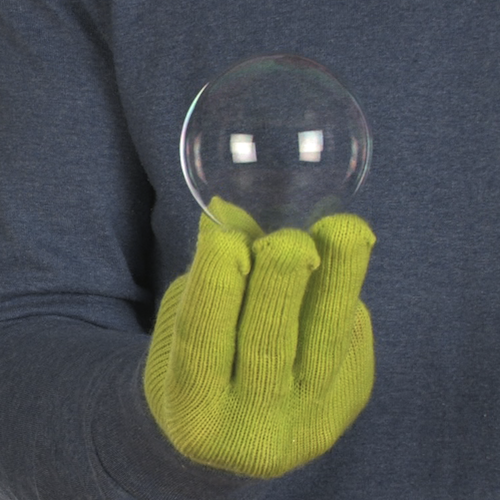
Put on the glove. Now, blow a bubble. Try holding the bubble and bouncing it.
Compare the durability of the bubbles using only soap and water versus the solution with soap, glycerin and water.
A bouncing bubble is amazing because most people have never seen a bubble bounce, much less be the person who actually does the bouncing! Experience shows that bubbles usually burst when they come in contact with just about anything. Why? A bubble’s worst enemies are oil, dirt, and gravity. A “super” bubble will bounce off of a surface if the surface is free of oil or dirt particles that would normally cause a break in the thin soap film of the bubble. The problem with gravity and evaporation is that the water film gets very thin (down to a millionth of an inch) on the top surface as time passes. It finally gets too thin to hold onto itself and the wall collapses completely.
Similar to the way we perceive the colors in a rainbow or an oil slick, we see the colors in a bubble through the reflection and the refraction of light waves off the inner and outer surfaces of the bubble wall. You can’t color a bubble since its wall is only a few millionths of an inch thick. A bubble reflects color from its surroundings.
Glycerin is commonly used in making bubble solution to give the soap film strength. The addition of glycerin help to keep the water from evaporating as quickly as it would using a solution with just soap and water. This is just one of the tricks used to make longer lasting, bouncing bubbles.
Demonstrating properties of bubbles and bouncing them is pretty cool, but it isn’t a science fair project. You can create a science fair project by identifying a variable, or something that changes, in this experiment. Let’s take a look at some of the variable options that might work:
That’s just a couple of ideas, but you aren’t limited to those! Try coming up with different ideas of variables and give them a try. Remember, you can only change one thing at a time. If you are testing different liquids, make sure that the other factors are remaining the same!